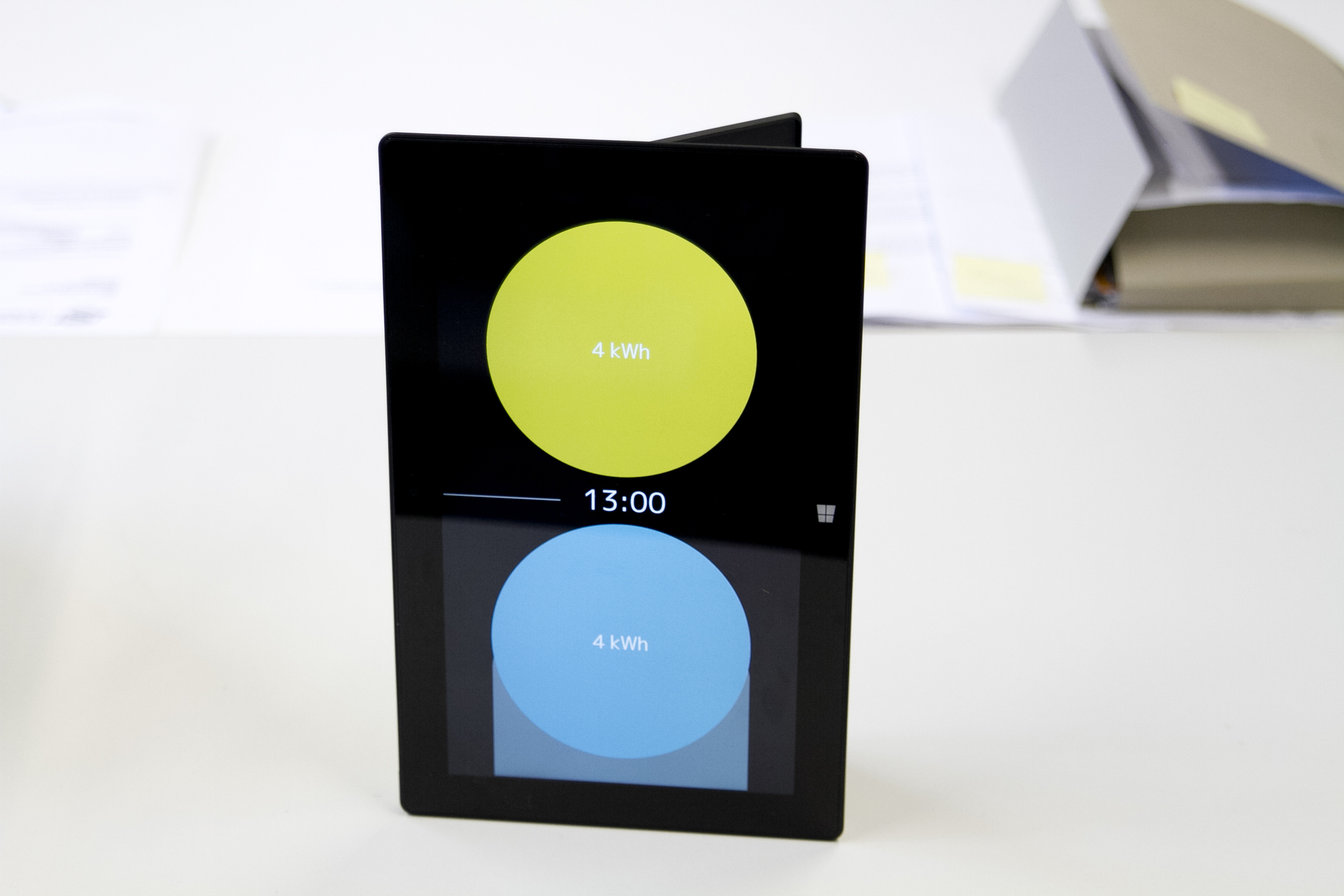Living with the sun
Funded project by Matthias Laschke, Thies Schneider and Marc Hassenzahl | 2014
In cooperation with Matthias Claudius Stiftung
Being independent of energy strengthens the feeling of autonomy. Moreover, if your energy is self-made, you will also feel competent and proud of it. It is a little like an own garden where you grow your own vegetables and fruits. However, similar to your garden you should to use the stuff you produce. Otherwise all your work will end up in the trash. "Living with the sun" is a project that is initiated by the Claudius Höfe in Bochum, Germany. The Claudius Höfe is a housing complex inhabited by different groups tenants. There are both elderly people, young families and people with disabilities.
The Claudius Höfe have the ambitious goal to be independent from external electricity. In order to meet this goal they installed a photovoltaic installation. Unfortunately the storage capacity of collected electricity is limited. Moreover it is expensive and connected with losses. Unfortunately the inhabitants do not use the self-made energy when it is available. Consumption data shows that the opposite is the case. People take a shower early in the morning although it would be better to take it at midmorning or at noon. But we all know that people have to go to work and do not wait until the sun provides enough energy to take a shower. However, there are activities that could be easily shifted. For instance every modern washing machine could be programmed and start automatically at noon when the sun provides the maximum of energy. Also neighbors could start the machine. However, also the early shower could be done with more self-made energy and less external energy. At this point it is necessary to save as much as energy as possible. Not because of environmental issues but rather to increasing the amount of self-made energy in contrast to the amount of external energy. In this case the environmental issues are rather secondary. However, this strategy would be also ecofriendly.
In order to change every day behavior, we were asked to create an interface system. We created a system that helps people to identify the right moment for the right activity with reference to their energy consumption and the sun’s provided capacity. It should help inhabitants to ‘live with the sun’. We designed two different concepts. The first concept (called ‘sunrise’) is about choice and opportunities based on the available energy. The second concept (called ‘rhythm of energy’) focuses rather on perception and harmony.
Sinrise
The system is like a sunrise of energy activities. Most of our daily activities are dependent on the consumption of energy. Making a coffee, taking a shower or doing the laundry. However, with a photovoltaic installation not all of these activities are always available (only if consumption is compensated with external energy). First and foremost the concepts provides an overview about how much energy is available and how much is used. On the one hand no energy should be wasted (stored in the battery or sold to an external provider) on the other hand no external compensation should be necessary. Both circles should be in balance (i.e. congruent). In order to get an inspiration which activities are possible, based on the current photovoltaic energy, a second screen provides detailed information about possible electrical activities. This is the sunrise. A washing machine, a hot shower or using the dishwasher are suggestions of the the system. The screen is split into two areas. Consumed electricity (left side) and possible upcoming activities (right). Moreover it is possible look ahead of upcoming predicted activities. This should help people to plan their daily routines. Finally a detailed overview of average values and timelines is available.
Rhythm of energy
On the one hand we consume energy and on the other hand the photovoltaic installation provides energy. Together both produce something like a rhythm. In order to ‘live with the sun’ both rhythms should be synchronously (i.e. in harmony). Spending too much energy even though less is provided would lead to a optical cacophony. This is the basic idea of the concept. In this concept the optical rhythm of the upper circle (it blinks) represents the photovoltaic energy and the lower the current spend energy. Both should be synchronously. Moreover an overview of the week is provided. Additionally users could have a detailed view into their home and all appliance that are switched on. In order to meet the amount of energy available, activities are also suggested by the system.










